Image
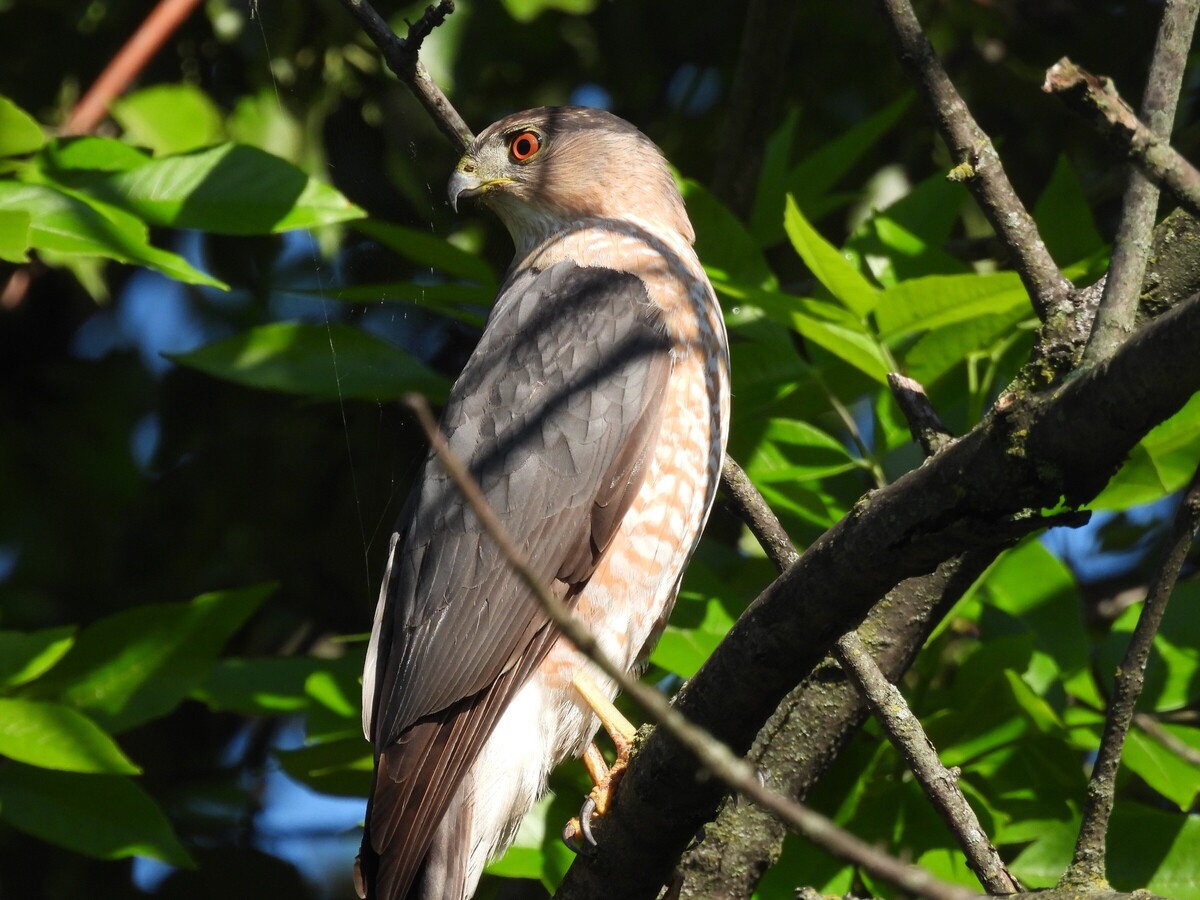
Seeing a hawk perched alongside a highway, or glimpsing one gliding effortlessly through your backyard, is a treat for anyone. Pennsylvania has over a dozen species of hawks and falcons, but they have such similar appearances that even the most seasoned birders struggle to identify them. In this column, we will focus on one particular species of hawk commonly seen around Boyertown, most often loitering in backyards - the Cooper’s hawk.

Why do Cooper’s hawks frequent backyards? They are one of the few hawk species that feasts on backyard songbirds. They particularly gravitate to areas where songbirds congregate in enticing numbers, often around bird feeders. If you have a feeder in your backyard, you likely get regular fly-bys from Cooper’s hawks, whether you see them or not.
Hawks are generally divided into two groups. Buteo hawks are bulky, shaped like footballs. An example is the very common red-tailed hawk, often seen perched on light posts or telephone wires along roadways. The other group is the accipiter hawks. These tend to be more slender with longer legs, and tail feathers that extend well past their shorter wing feathers. Buteos look bulky when seen soaring overhead, whereas accipiters take the appearance of a flying cross.
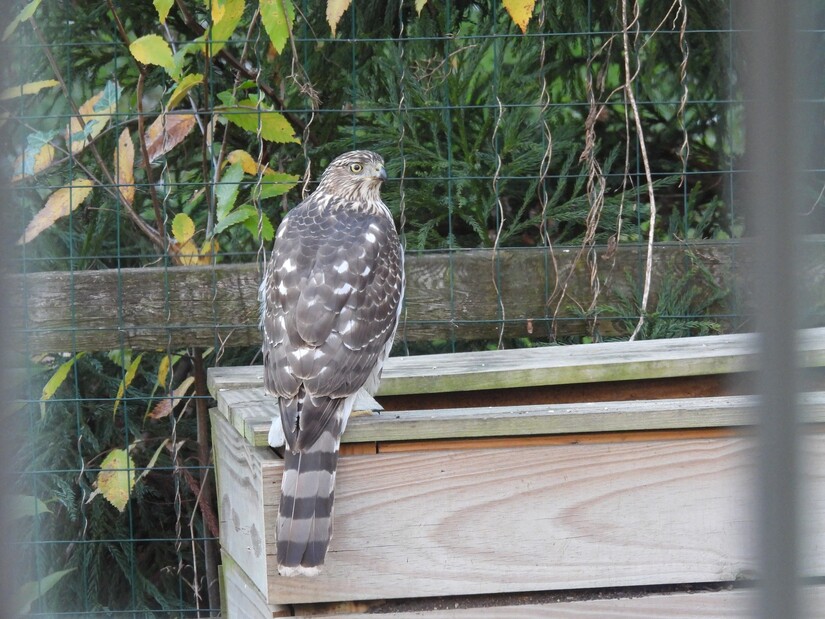
Cooper’s hawks are accipiters. Their body morphology is the reason they prefer to snack on songbirds (whereas buteos mostly dine on small mammals). Their long tail feathers act as rudders, and allow Cooper’s hawks to maneuver quickly and concisely through dense canopies and brush. They are remarkably acrobatic, able to turn on a dime, evoking the image of fighter jets. Further, their eyes face forward (unlike many other birds), which provides them with excellent depth perception that allows them to catch prey while moving at high speeds. With these unique attributes, sparrows and starlings and doves are often on the menu.
Cooper’s hawks eat about 12-percent of their body each day in food. (Imagine an average-sized man eating ten pizzas each day.) While smaller birds are predominantly their prey, Cooper’s hawks will still occasionally supplement their diet with smaller mammals and lizards. They are voracious. Most raptors kill their captured prey by tearing at them with their beak. Cooper’s hawks clutch their prey away from their body with their long legs and squeeze them to death.
The life of such an acrobatic bombardier is not without peril. Studies of Cooper’s hawks skeletons show that almost one-fourth of them have broken chest bones from chasing prey through dense brush and shrubs.
Cooper’s hawks are known as partial-migrants (some migrate seasonally to breed while others take up permanent residence somewhere). Most Cooper’s hawks in the Boyertown area are likely residence hawks. Like most raptor’s, Cooper’s hawks change appearance as they age. The first picture in this column is of an adult Cooper’s hawk guarding a nest that I took in a downtown Baltimore park. The pictures below are of a juvenile Cooper’s hawk that is frequent visitor to my birdfeeder-laden backyard. The differences in color and chest markings and other appearances between the ages can be striking. Note the difference in eye coloration between the adult Cooper's hawk and the juvenile.

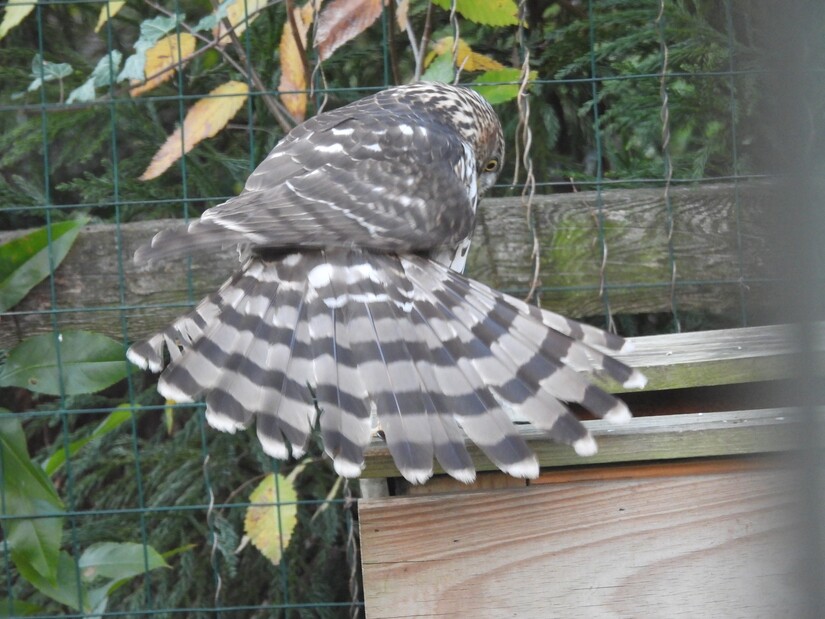
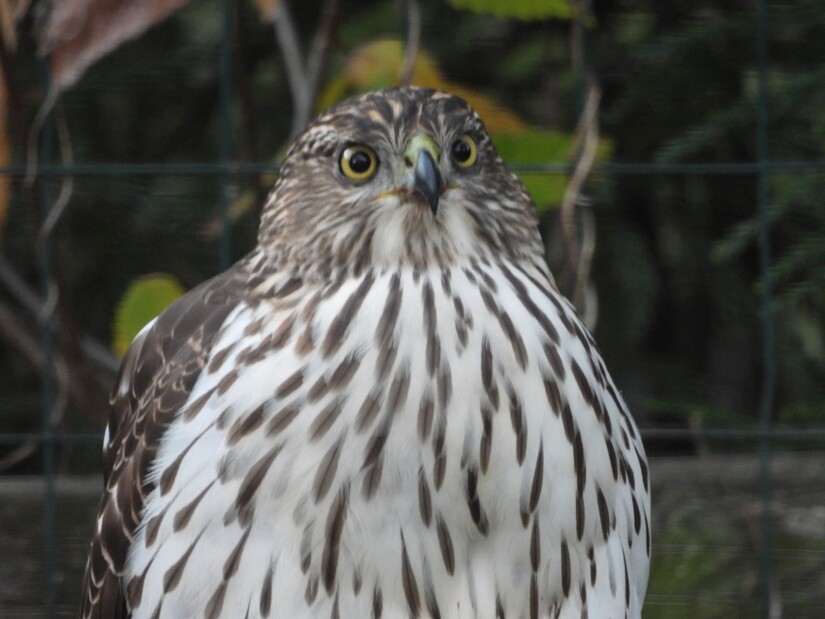
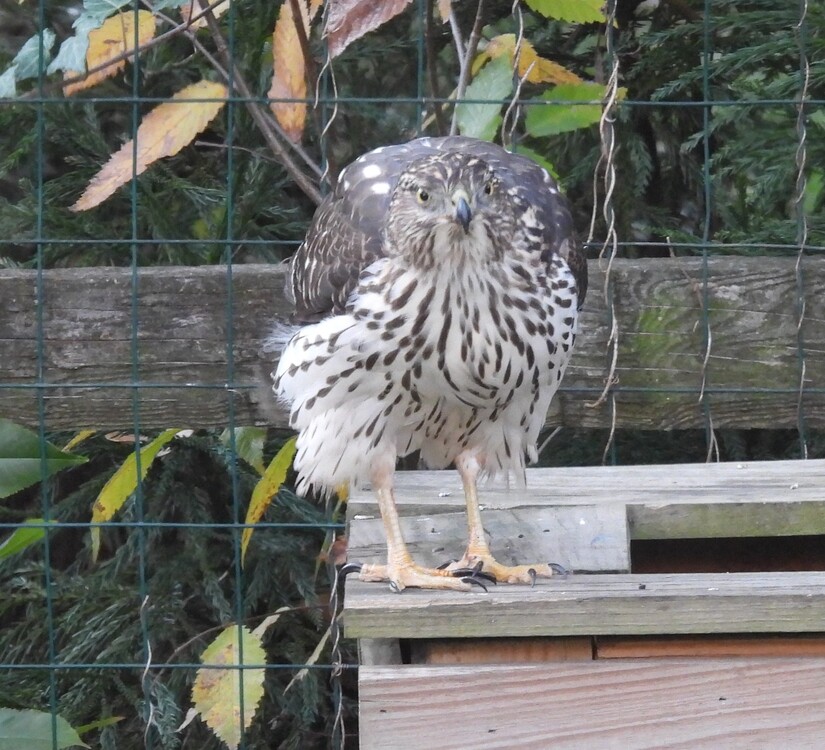
On another note, there is a less-common accipiter around Boyertown called a sharp-shinned hawk that looks almost identical to a Cooper’s hawk with only very subtle differences that most birders struggle to see. They tend to be smaller than Cooper’s hawks. They also linger around backyard bird feeders. However, based on my experience, Cooper’s hawks are much more commonly seen in backyards that the sharp-shinned hawks.
One final note regarding the Cooper’s hawk: The American Ornithological Society recently decided to phase out what they call eponyms - birds that are named to honor specific individuals. The Cooper’s hawk falls into this category, being named after a prominent naturalist. The Cooper’s hawk will likely receive a new name over the next few years.
Mike Strzelecki is a freelance travel and outdoor writer, and 1981 graduate of Boyertown Area Senior High School. He writes from his house in Baltimore, Maryland. In his spare time, he joins his wife on adventures around the country observing and photographing birds
.